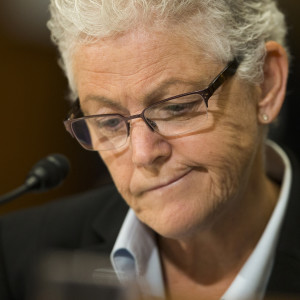President Obama, speaking in Alaska recently, sought to keep the momentum going for action on climate change and carbon emissions. Referring to China, he declared, “As the leader of the world’s largest economy and its second largest emitter… the United States recognizes our role in creating this problem, and we embrace our responsibility to help solve it.”
The President is correct. We do have a responsibility. But while it may be that he is looking to secure his environmental legacy before leaving office next year, he should also consider the economic legacy he will leave behind.
The economy is slowly bouncing back from the Recession and although the latest unemployment rate has dipped to 5.1 percent, the continued slow job growth shows we are not out of the economic woods just yet. On top of that, the number of Americans working or actively looking for a job is now at an historic low. With the Administration set to release a slew of environmental regulations before year’s end, we should pause a moment to take into consideration how the nation’s economy and workforce will be impacted as a result.
Case in point: the Administration this week will release a rule imposing tougher regulations to reduce ozone levels. The Environmental Protection Agency has proposed lowering the current standard for ozone from 75 parts per billion to 65-70 parts per billion. The final rules will be announced after the Office of Management of Budget completes a detailed review on the specific costs and benefits of what the EPA is proposing. Under the law, the final rules must be issued by October 1. But OMB only received the EPA’s proposal at the start of September, and 30 days is a very quick turnaround for such a wide-reaching regulation with impacts on multiple economies across the country.
While the lowering of the ozone standard may seem arcane to most people, it will have a significant impact on the nation’s still-struggling economy. One estimate puts the cost at $140 billion per year with job losses in the millions. A rule like this doesn’t exactly help us create jobs in order to sustain a healthy middle class, especially in our urban communities which will find themselves disproportionately impacted. The truth is small towns, big towns, and industries across the country are still trying to comply with the current standard.
Concern over this rule isn’t solely coming from Republicans on Capitol Hill. Governors – nearly half in fact – have weighed in with the EPA on the issue. It also crosses party lines as dozens of locally elected democratic officials who will be responsible for complying with the new rule – mayors, state representatives, and county supervisors – have asked the EPA to hold off on revising it.
Given that many local authorities only received guidance on how to meet the current standard a mere six months ago, this represents a significant new regulatory burden for manufacturers and other business whose activities contribute to ozone. It would require the purchase of new equipment and machinery the EPA itself estimates will cost $15 billion.
Aside from the economic repercussions, states may find themselves in violation of the EPA’s new standard, not from its own emissions, but rather as a result of ozone drifting from neighboring states or even China. Sen. Michael Bennet (D-Colorado) made this very point recently when he spoke on a panel at the Rocky Mountain Energy Summit, “Because of the pollution that’s come in from other Western states, from across the globe, from wildfires in the West, we have significant parts of our state that would be in non-attainment…. That doesn’t make any sense. That’s not going to work.” Colorado’s Governor, John Hickenlooper, a fellow Democrat, echoed that concern last month when U.S. Energy Secretary Earnest Moniz visited the state. Gov. Hickenlooper noted that he “still very concerned,” saying he wasn’t sure the tough new limit was the best thing for his state.
This is exactly the situation my home state of Arkansas found itself in several years ago. Ozone would drift across the border from Tennessee, causing our air pollution levels to rise through no fault of our own. Yet the EPA won’t take into consideration the fact that ozone emissions don’t stop at state lines.
Polls show that the American people support higher standards for air quality as a general principle, but worry about the economic costs, especially since the climb out of the Great Recession is still difficult for many families. The question is whether it is wise to impose tough standards without fully considering the economic consequences and the external sources of ozone that are hard to control.
I applaud President Obama for using the final year of his presidency to redouble his efforts on environmental policy. At the same time, it is important new rules and regulations actually achieve their desired affects as they impose inevitable costs. What drifts across state borders from other states may be beyond the control of local and state officials, but a balanced regulatory policy is still very much a presidential prerogative. And is one that we hope will secure both an environmental and economic legacy.

